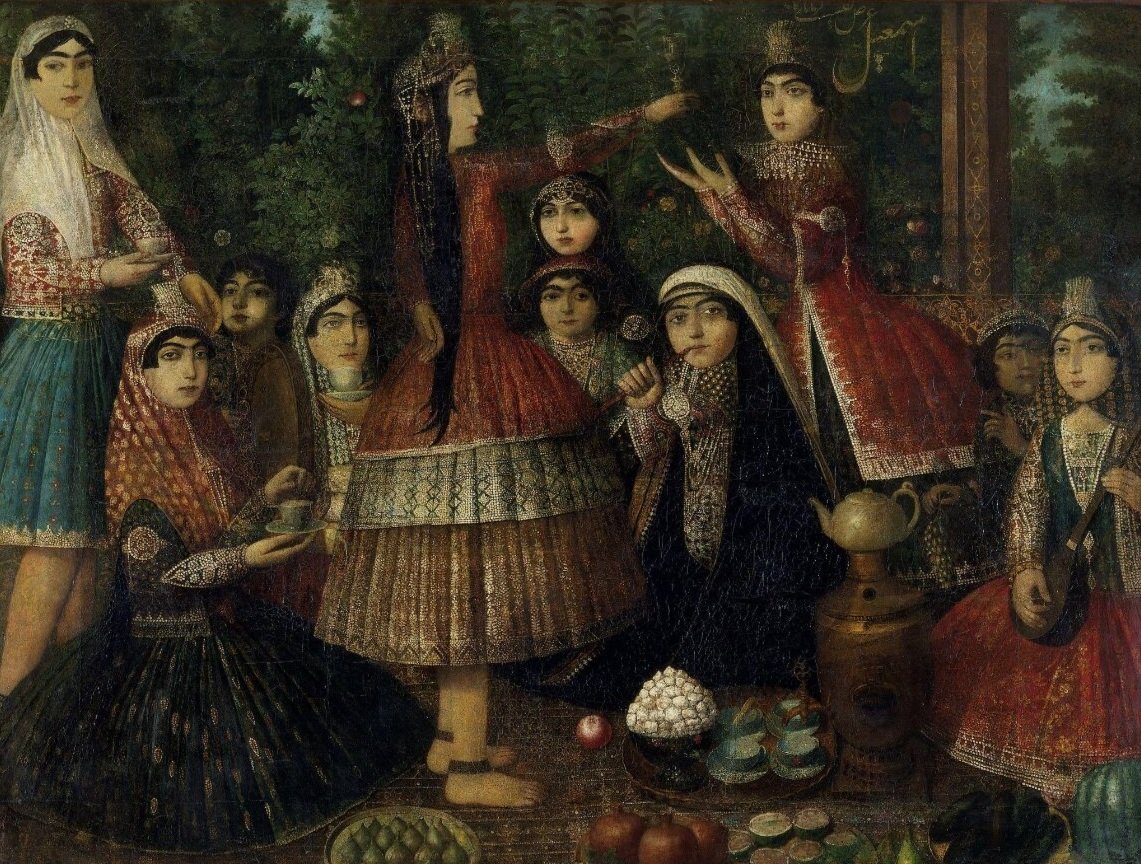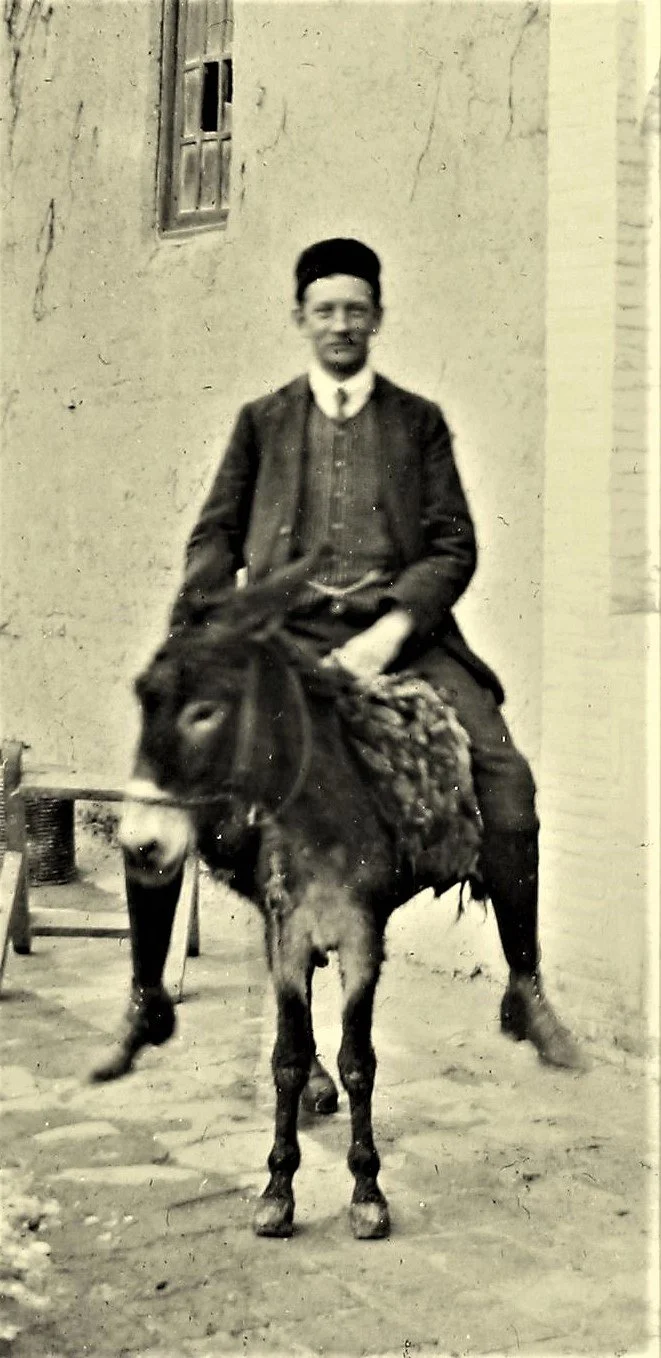
View and book lectures
Upcoming lectures
Click on an event below to view all details and book directly.
Please note that lectures are for Iran Society members and guests only.
Past lectures
The Ziegler company of Manchester was one of the biggest exporters of carpets from Iran to Europe in the early 20th century. Mark Flinn is the grandson of Leonard Flinn, who travelled to Iran six times in the early 20th Century in connection with his employment with Ziegler & Co.
After a brief run through of the human, geographical and historical context, Souren will look at the char-bagh structure of Persian gardens and illustrate some outstanding examples through time. Derivative motifs, art forms, international influences, and modern parks and gardens will also be touched upon.'
Souren grew up in the UK and Iran, and lived in south-western USA until returning to the UK in 1998. For the last 25 years he has been engaged in gardening: design, creation and planting. He began writing for The Hardy Plant (the journal of the Hardy Plant Society) in 2014 and became its editor in 2019. He has a particular interest in bulbs and wildflower meadows. More information on www.sourenala.com
An account of Christopher’s photographic journey through the ancient Iranian lands of Uzbekistan, Turkmenistan and Iran, being a part of his journey overland from London to Beijing, which forms the subject of his book The Silk Road: A Living History.
This lecture will attempt to explain in an accessible manner the main features of the Zoroastrian fire temple economy in Sasanian Iran and highlight new insights into modern research regarding the role of money, commerce and profit in the Sasanian economy.
David Chaffetz in his book traces the role of horses in empire building from the Danube to the Yellow River, from their early domestication in pre-history up to a bozkashi match in Kabul in 1973. His view is that, given the constant trading in horses for military or banditry purposes between Iran, Central Asia, India and China, the Silk Road should properly be called the Horse Road. Silk was just the currency.
This lecture is based on Professor Matthee’s book, Angels Tapping at the Wine-shop’s Door*: A History of Alcohol in the Islamic Middle East. (*from Hafez).
The book debunks the myth that, since alcohol is forbidden in Islam, “good” Muslims do not drink. It argues that, rather than extraneous to Islam, alcohol is integral to the faith, present through its very presumed absence.
The artistic patronage of the second Qajar ruler Fath Ali Shah (r. 1797-1834) is well known. Less studied is his patronage of the major shrines within his lands. in Qom, Mashhad and Iraq. This included the building of new courtyards, the gilding of domes and iwans, and the gifting of doors inlaid with rubies and emeralds. This lecture explores how the Shah’s lavish gifts to these shrines shaped his image as a pious and generous ruler.
This talk explores the response of British academia to the Anglo-Iranian Oil Crisis of 1951-54, focusing on the contribution of the Edinburgh University scholar L.P. Elwell-Sutton. Much has been written about the British scholars, such as Ann Lambton and Robert Zaehner, who were indifferent to the Iranian cause and even helped the British government devise strategies to engineer the downfall of the government of Mohammad Mosaddeq. However, we know little about those, such as Elwell-Sutton, who challenged British policy and championed the Iranian case. The talk examines why Elwell-Sutton sympathised so deeply with Iran and how he attempted to shape public opinion during the crisis, both through newspaper articles and radio interviews. Finally, the talk looks at Elwell-Sutton’s Persian Oil, a scathing critique of British oil policy in Iran in the first half of the twentieth century, and the response to it from the British establishment.
At the end of the British-Soviet occupation of Iran in 1945, the Tudeh Party emerged as a prominent political entity. In a relatively short period, its members had risen from obscurity to become members of parliament, cabinet ministers, and trade union leaders. While the war against fascism waged, the British saw the Tudeh as a useful local ally and coordinated with the party to stabilise the occupation. However, as the war reached its end, the British started to view the party as dangerous, a menace and a tool of the Soviet Union. Britain’s position and assets in Iran came under threat as the Tudeh called for nationalisation of oil and aligned itself with the Soviet occupation of Azerbaijan. This talk will show how the Cold War begins in Iran by highlighting the tensions between the British and the Soviets were present from the start of the occupation, and how the Tudeh played an important role in creating those tensions. Propaganda played a key part as well, manipulating opinion and instigating anxieties, especially for the British Empire and London’s position in the post-war global order.
In 1903, Lorimer was commissioned by the British Raj to compile a handbook for British diplomats and agents in the Persian Gulf region. Initially given only six months, he insisted on being granted more time to ensure the handbook was thorough. The result was the 5,000 page two-volume Gazetteer of the Persian Gulf and Central Arabia. Due to the secrecy of the document, it was not acknowledged in his obituaries and public knowledge of the document only became apparent when the document was declassified in 1955.
This talk focused on the American Presbyterian mission, which began in the early 1830s and began to decline with the Great Depression’s retrenchment and Reza Shah’s nationalist requirements, eventually leading to the shutting of all mission schools in 1940, except for the one which they ran for their own children, which continued until the 1978-79 revolutionary year as an international school for English-speaking children.
This presentation briefly explores the intersection of art and architecture, popular piety, and the politics of legitimation. Through an examination of the Takkiyya Mu’avin al-Mulk building complex and its decorative programme, it addresses issues of patronage, Shiʿi iconography and popular religious practices during the early 20th century in Iran. It further argues for the role of takkiyyas in the creation of a sense of community and group identity, and in the early stage of the emergent idea of nationhood at the time.
Sussan Babaie is Professor of the Arts of Iran and Islam at the Courtauld Institute. She is best known for her work on Persian and Islamic Art of the early modern period. She has written extensively on the art and architecture of the Safavid dynasty.
Her talk will be held in St Columba’s Church Hall, Pont Street, followed by a Persian dinner. This will be a ticketed event for members only. Members will receive booking information. Booking will close on 7th December.
Join the historian Tom Holland in illustrated conversation with Ali Ansari discussing the role of the Persians in world civilisation, looking at their contributions to religion, philosophy, politics, literature and wider culture, including horticulture and fashion. From Paradise and the walled garden to the business suit and the high heel: what has been the impact of ‘Persia’ on the Western imagination?
From 1865, the Indo-European Telegraph Department (IETD) and its network formed a vital link between London and India. Initially constructed for imperial security, the IETD network played a transformative role in connecting empires, cultures and peoples across the British empire and beyond. But what was the telegraph network’s impact on Iran? And how was it used by local populations? Focusing on the tumultuous city of Shiraz in the 1890s, this presentation examines the diverse uses of IETD telegraph infrastructure by local communities. It ponders the impact of the IETD network in Iran and argues that the telegraph was not merely a ‘tool of empire’ but also a space where unintended users sought refuge, voiced demands, and formed identities.
The Armenian merchants of New Julfa were recognised by contemporaries as being among the most successful international merchants of the 17th and 18th centuries, with a trade network that extended East-West from the Atlantic to the Pacific, and North-South from the White Sea to the Indian Ocean. This lecture discusses the causes of this extraordinary success, focusing in particular on the Isfahan factor: the social capital that the Julfa Armenians accrued through their location in Isfahan, the cosmopolitan capital of the Safavid Empire.
During the Constitutional Revolution (1905-1911), Iran’s first revolution, both men and women took to the streets to voice their dissatisfaction with the existing autocratic regime. These protests and the connected revolutionary movement critically impacted the making of modern Iran as a nation state. Photography, which had become available and affordable to the general public for the first time through photographic picture postcards, played a crucial role in this process. Political news was circulated on these photographic picture postcards, complementing lithographed, illustrated newspapers and telegrams, while also playing a role in aesthetic and artistic changes, which led to a new kind of revolutionary portraiture. In this talk I will analyse the role of revolutionary portraiture by focusing on the role photography played in making the revolutionary heroes Sattar Khan and Baqer Khan into nation-wide known and recognizable celebrities. I will then examine how the role of revolutionary portraiture changed at the turn of the century from first providing an authentic document of political struggle to, in later years, the production of photographic souvenirs, a hollow imitation of the first.
In late antiquity, the Roman and Sasanian Empires were actively engaged with one another in both conflict and collaboration. It would be on the battlefield however, that leadership would be put to the test the most, with generals competing for success and their respective ruler’s favour. The late sixth century was a time of conflict and therefore a large amount of attention has been given to examining campaigns, battles, and diplomatic encounters, with little attention given to the practicality of military command. This talk aims to tackle a critical aspect of the lives of military men: how did both empires deal with their respective generals according to their battlefield success or defeat? Can we find similarities or differences between the methods they implemented, and the significance they play in understanding the military culture of the two empires?
















